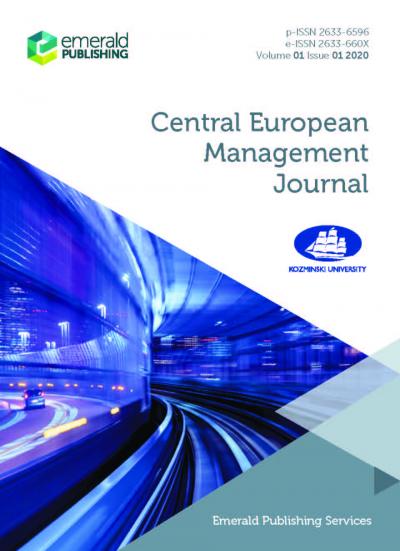Toward Most Valuable City Logistics Initiatives: Crowd Logistics Solutions’ Assessment Model
Jagienka Cieplińska
WSB University in Gdańsk

Agnieszka Szmelter-Jarosz
WSB University in Gdańsk

07.2020 28 (2) Central European Management Journal
DOI 10.7206/cemj.2658-0845.21








